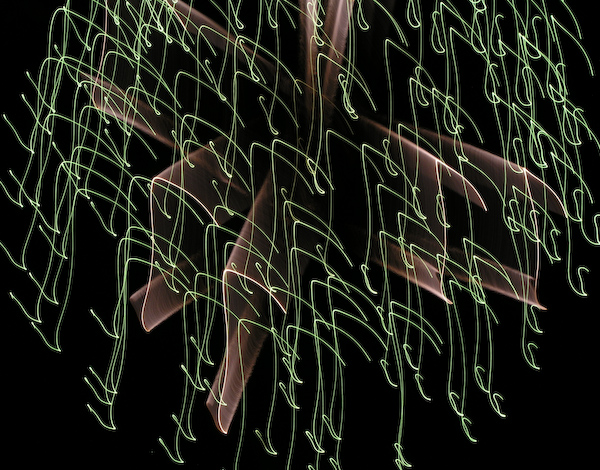Fireworks: Part 2 — Moving the Camera
This is the second of a three-part series on photographing fireworks. The first part examined what can be done with a stationary camera, and is a good foundation on which this week’s topic builds.
As discussed in last week’s entry, keeping the camera stationary during a fireworks exposure can produce some visually appealing (yet recognizable) images. This week we mix things up by showing what can be done if the camera is NOT stationary during the exposure, and the results are less recognizable as being fireworks, but are quite interesting.
Longer exposures provide plenty of time in which to blur the image with not only the motion of the subject but also the motion of the camera. Often, such motion blur is a bad thing, but with fireworks it can produce some very interesting images. Keep in mind that these fireworks are essentially a collection of point light sources (in a trajectory determined by the launch, explosion, and gravity) against a relatively black sky. Keeping our gaze fixed will produce in our mind’s eye the kind of image demonstrated in last week’s entry. However, if our gaze were to move, we (and not only the subject) would be inducing some of the apparent motion. Herein lies an opportunity — I often intentionally move the camera along squiggly/curvaceous paths during the exposure to induce interesting streak paths. The movements can include up-down, side-to-side, rotations, and even rotations of the camera about the optical axis.
Even more so when you are moving the camera during the exposure, it helps to have a longer exposure. A shorter shutter speed will not produce very long streaks and thus probably won’t record all of your movement of the camera. With a long enough exposure (perhaps a few seconds), you could draw pictures, or spell words or names, or even make signatures. The possibilities are infinite.
This hand-held image was taken with a 2s exposure. Although I did not do it for this image, you can get smoother streaks (particularly at the endpoints) if you begin the movement of the camera before opening the shutter and continue the movement of the camera after closing the shutter.

Tip of the Week
2007.06.11

